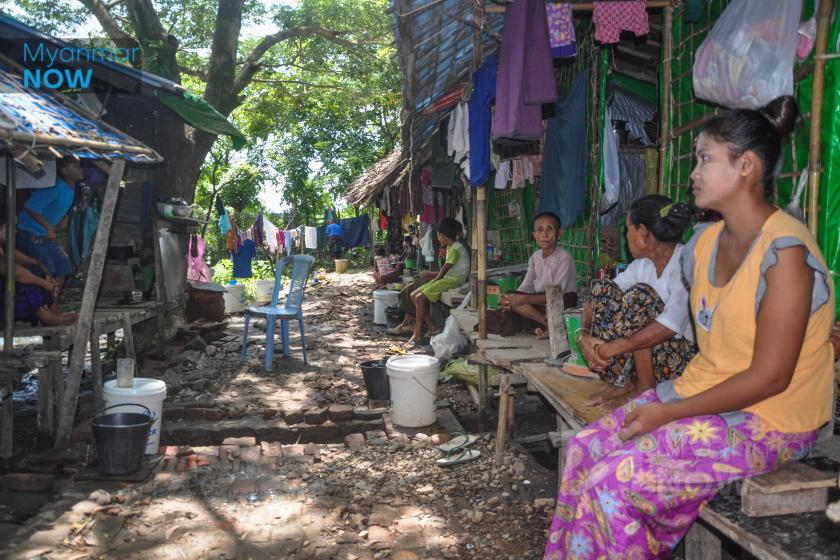
Clashes between the military and the Arakan Army (AA) have killed at least 215 civilians since the start of the Covid-19 pandemic, a monitoring group has said.
The Yangon-based Burma Monitor told Myanmar Now that 350 have also been injured since March 23, when Myanmar recorded its first two cases of the disease.
The figures suggest that civilian casualties from the conflict have increased dramatically this year.
And they highlight how for many in Rakhine, the threat of the Covid-19 outbreak pales in significance compared to the ongoing fighting.
Most townships in the state have been under lockdowns and a nighttime curfew since the virus began to spread more rapidly late last month, but the Tatmadaw has refused to heed calls for a ceasefire there.
The AA is officially labelled as a terrorist organisation.
Among the most recent casualties are two seven-year-old children, who died after shells landed in Nyaung Kan village in Myebon township last week.
Villagers said the Tatmadaw was responsible while Save the Children called the attack a potential war crime.
“People are scared,” said Phay Than, a local MP. “It’s sad that these innocent civilians have to suffer for something that has nothing to do with them.”
The vast majority of clashes in Rakhine, 97%, take place within 2.5 miles of villages, according to the Yangon-based Myanmar Institute for Peace and Security (MIPS).
Local aid groups say that is a key reason why civilian deaths are so high.
“I no longer want to talk about it, I just have to say that they lack humanity,” said Zaw Zaw Tun, secretary of the Rakhine Ethnics Congress, a Sittwe-based relief organisation.
Myanmar has now recorded 3,195 Covid-19 cases and 32 deaths, including 736 cases and one death in Rakhine state.
The townships with the most civilian deaths from the conflict are Paletwa in southern Chin state, where 30 people died in April alone, as well as Buthidaung, Rathedaung, Kyauktaw, Ponnagyun, Mrauk-U, Minbya, Myebone and Ann.
There were numerous civilian casualties in Kyauktaw after a Tatmadaw unit entered the town on August 27. On the same day, a woman died after an artillery shell hit her in Apauk Wa village. A few days later, a 40-year-old vendor named Sein Thar Aung was shot dead about two miles from Kyauktaw.
Then nine people were injured by artillery shells that struck three villages in the area on September 2.
The next day, two villages in Kyauktaw were burned down, destroying over 200 homes, and two villagers there were shot and killed. Villagers said the Tatmadaw was responsible, but a military spokesperson denied the allegations.
Children frequently appear among the dead. An 18-month old toddler died when shells landed on Azalar village in Buthidaung in June, and two young children from Phone Nyi Late and Thayet Pyin villages died from a mine explosion in May.
Last week the AA fired on a boat carrying Chin state municipal affairs minister Soe Htet along the Kaladan river in Paletwa, the minister said.
Three government directors were also on board but no one was injured, Soe Htet said.

“It’s a conflict area and this tends to happen,” he told Myanmar Now. “But it is quite interesting that this happened when regional government officials were on their way home.”
Myanmar Now was unable to contact the AA for comment because journalists who do so risk arrest under anti-terror laws.
After the AA fired at them, a nearby military base fired back towards the AA and the boat was trapped between gun and artillery fire for about half an hour, the minister said.
The Tatmadaw’s True News Information Team did not answer calls seeking comment.



